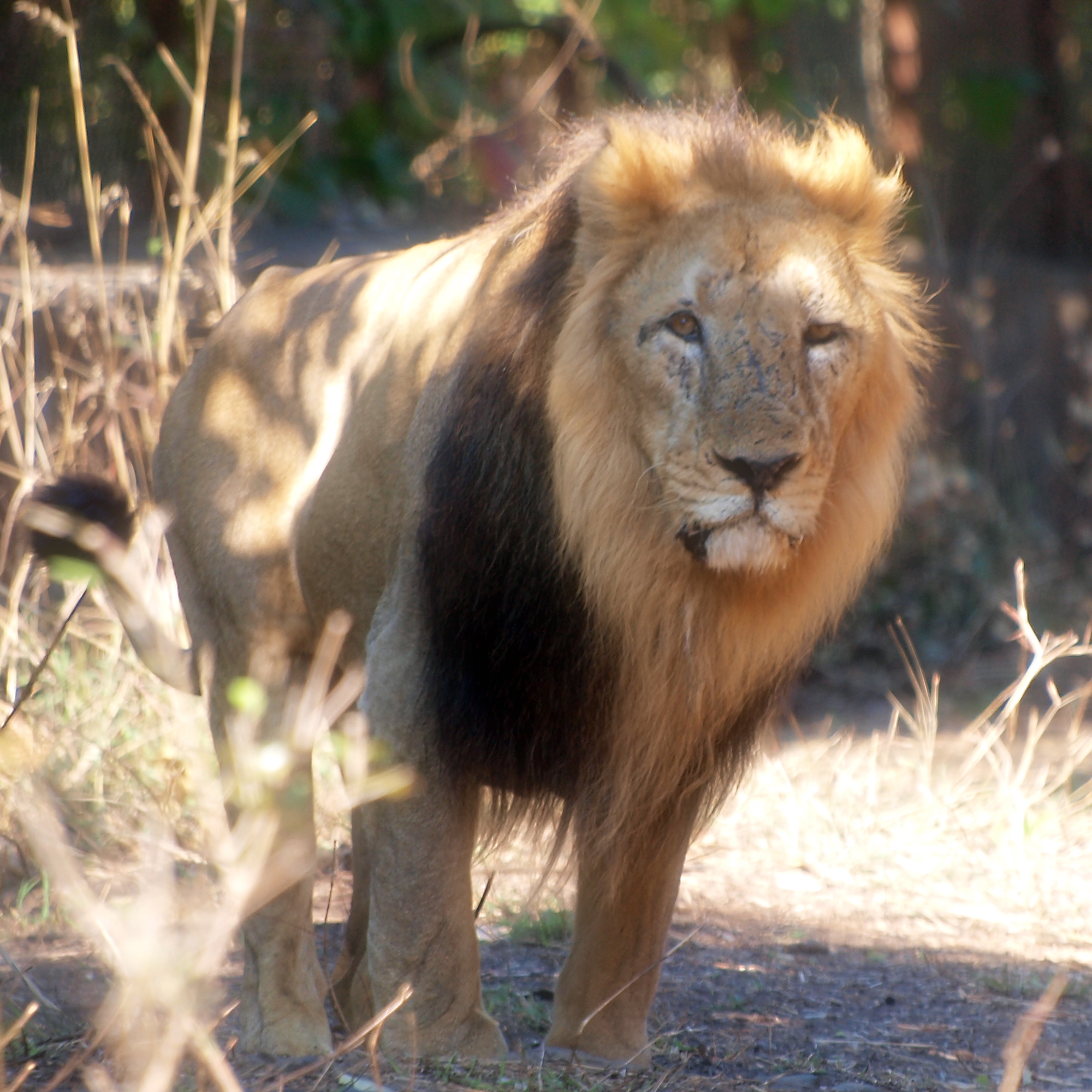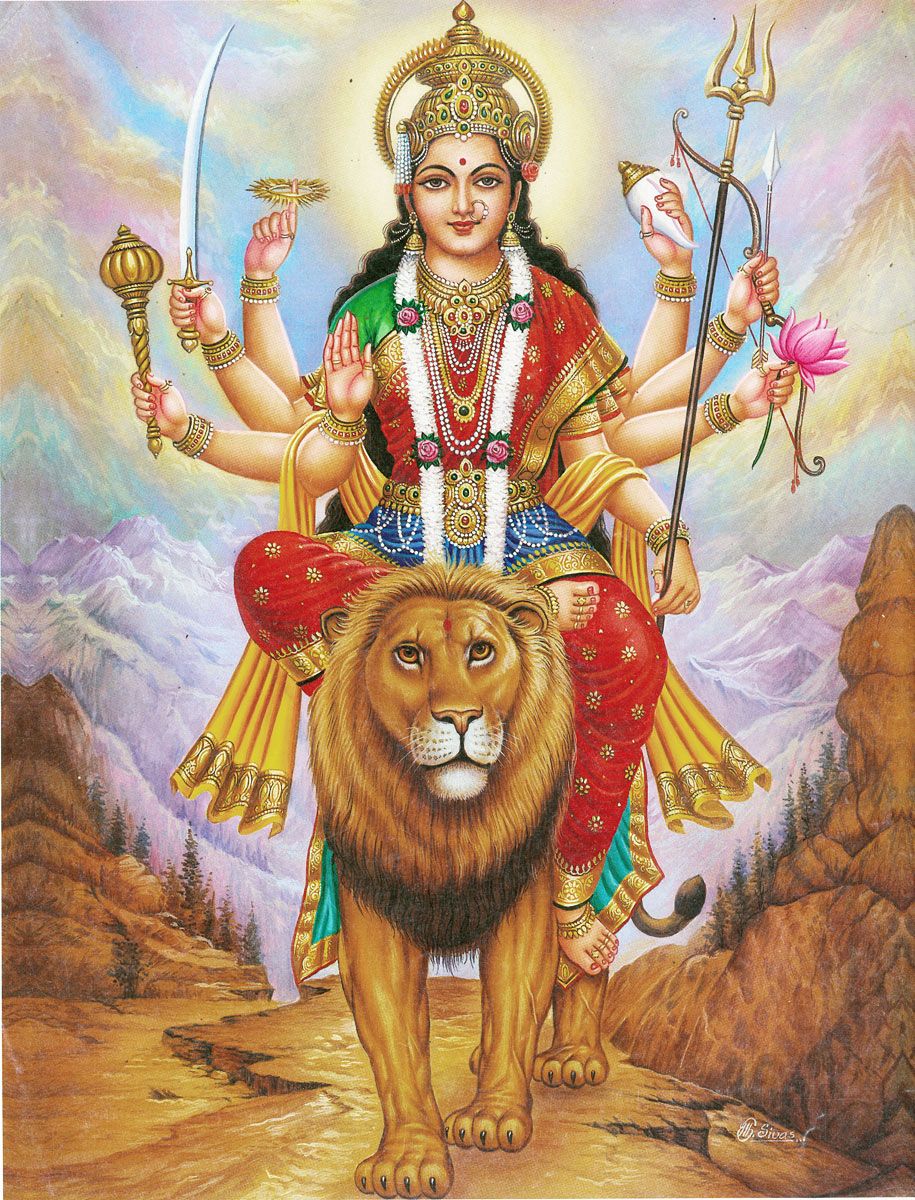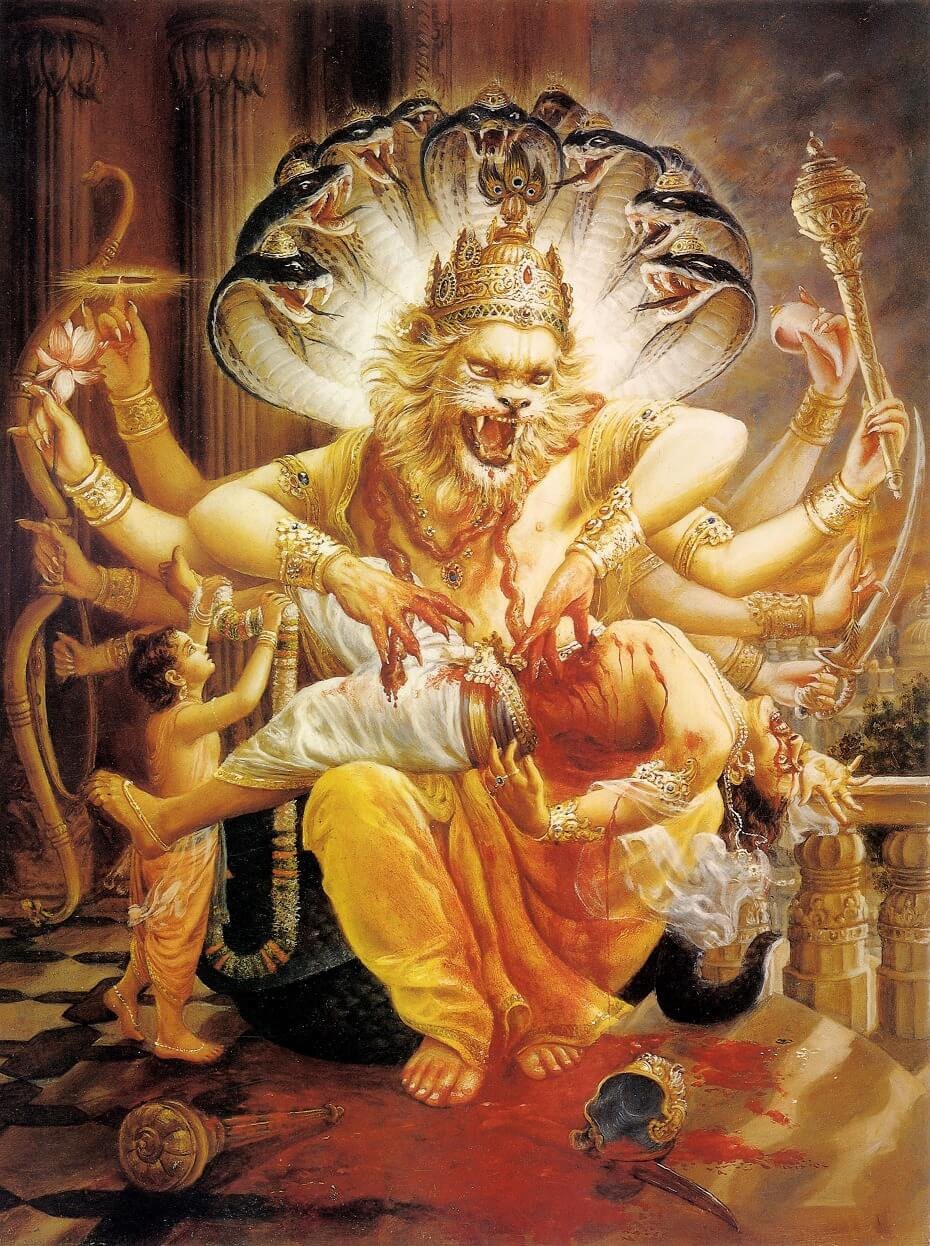Asiatic Lion

In Religion and Mythology
Goddess Durga riding a lion
Goddess Durga, the fierce form of the Goddess Parvati, is often depicted as a warrior-Goddess, who destroys demons. She is referred to as ‘Sheravali’ in the northern parts of the country, as her vahana is a lion. A black coloured lion is the vahana of Rahu, the serpent navagraha.

In Religion and Mythology
Narasimha avatar of Lord Vishnu
Narasimha, the fourth incarnation of Lord Vishnu was half-man (Nara) and half-lion (Simha). He killed a demon named Hiranyakashipu.

In Religion and Mythology
National emblem of the Republic of India
The Lion is also one of the important symbols in Buddhism. It is associated with royalty, strength and power. The teachings of Buddha are sometime referred to as the ‘Lion’s roar of dharma’. In Buddhist art, lions are often depicted as the protector of dharma, supporting the throne of Lord Buddha.
The state emblem of India is adopted from the famous lion capital on the Ashoka Pillar at Sarnath, Uttar Pradesh. The capital was erected by Emperor Ashoka to mark the site where Lord Buddha delivered his first sermon to his five disciples.




Scientific Name: Panthera leo persica Linn
Common Name: Asiatic lion , Sher (Hindi), Singam (Tamil), Simhaha (Sanskrit)
Distribution: Confined to the Gir forest in Gujarat
IUCN Conservation Status: Critically endangered (CR)